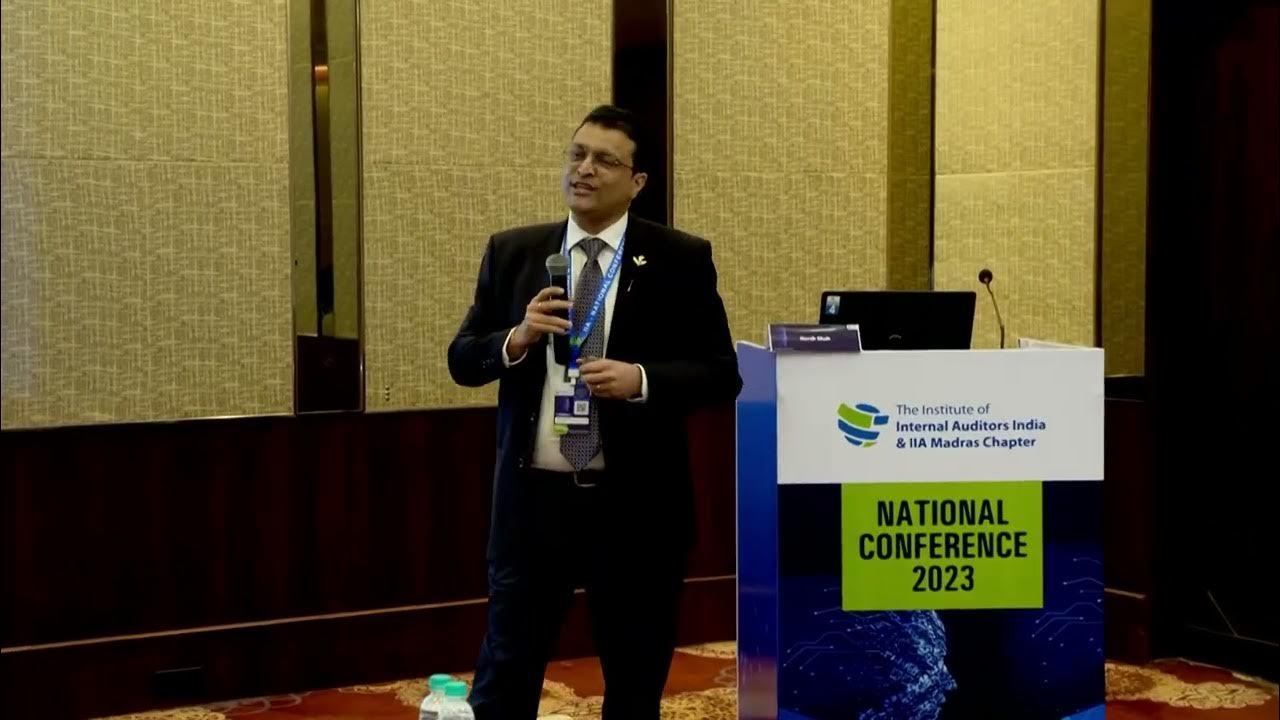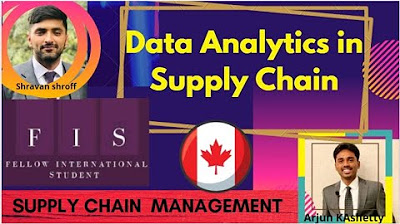12 Steps to a Resilient Enterprise
Summary
TLDR在这段视频脚本中,供应链行业专家Mac McGarry分享了如何构建一个有韧性的企业。他讨论了过去一年中不可预测的事件对企业造成的影响,包括贸易战、疫情、消费者行为变化、政府反应、气候变化和政治分歧。McGarry强调了供应链专业人士在这些挑战中的关键作用,他们不仅是基础设施的无名英雄,也是在市场动荡中为领导者提供洞察力和行动方案的关键人物。他提出了12个步骤,帮助企业评估现状、制定愿景、利用技术、动员人才、进行业务连续性规划、利用数据、管理变革,并最终实现文化的转变,以创建一个更具韧性和敏捷性的企业。
Takeaways
- 📈 **构建韧性企业**:企业需要制定计划以增强供应链的韧性,应对如疫情这样的不可预测事件。
- 🌟 **领导力与方向**:Mac McGarry作为legility的执行副总裁,强调了领导力在塑造供应链未来中的重要性。
- 🤝 **客户关系**:建立强大的客户关系对于企业的生存和发展至关重要。
- 🚀 **技术的重要性**:技术是推动创新的关键催化剂,AI和新数据源可以提高供应链的预测能力和韧性。
- ⚖️ **权衡与决策**:企业需要评估不同情况的权衡,例如服务水平与库存之间的关系。
- 📊 **数据的作用**:数据被视为新石油,企业需要有效收集、聚合和利用数据以提高决策质量。
- 🌐 **全球劳动力**:企业需要考虑不同年龄段和背景的全球劳动力,设计适合他们的工作流程和应用程序。
- 🔄 **供应链的集成规划**:端到端的规划与执行相结合,是提高企业敏捷性和韧性的关键。
- 📚 **教育与领导**:供应链专业人员需要向领导团队传达如何更好地服务消费者并在市场中保持竞争力。
- 🛠️ **技术平台的简化**:企业应考虑使用单一平台来简化其供应链操作,以提高效率和响应速度。
- 📉 **应对市场变化**:企业必须快速适应市场需求的变化,如将产品从餐厅销售转向零售市场。
Q & A
什么是供应链的弹性企业?
-供应链的弹性企业是指能够在面对市场波动、不可预测事件或危机时,快速适应并维持运营效率和客户服务水平的企业。它不仅能够应对短期内的挑战,还能通过战略规划和技术创新,长期保持竞争力。
为什么说当前时刻是建立弹性企业的重要时机?
-当前时刻,由于疫情和其他全球性事件的影响,市场经历了前所未有的波动,这对企业的供应链管理提出了更高的要求。企业需要建立更灵活、更具适应性的供应链,以应对快速变化的市场需求和潜在的风险,确保业务的连续性和增长潜力。
在建立弹性企业的过程中,技术扮演了什么角色?
-技术在建立弹性企业的过程中扮演了至关重要的角色。它不仅提高了数据处理和分析的能力,使企业能够更快地做出基于数据的决策,还通过自动化和智能化的工具,提高了供应链的响应速度和运营效率。此外,技术还帮助企业实现更好的可视化和预测能力,从而提前应对潜在的供应链中断。
如何量化供应链的弹性?
-量化供应链的弹性通常涉及评估企业对市场变化的响应速度、库存水平、服务能力、供应链中断的影响以及恢复时间等方面。具体的指标可能包括订单履行率、库存周转率、供应链中断的频率和持续时间、以及从中断中恢复的速度等。
在供应链管理中,为什么需要敏捷性和弹性?
-敏捷性和弹性对于供应链管理至关重要,因为它们使企业能够快速适应市场变化和不可预测的事件。敏捷性强调的是快速响应和灵活调整生产和服务的能力,而弹性则是指在面对冲击时维持运营和快速恢复正常运作的能力。这两者结合起来,可以帮助企业在竞争激烈和不断变化的市场中保持竞争力。
企业如何评估其供应链的当前状态并制定改进计划?
-企业可以通过内部审计和外部咨询相结合的方式,评估其供应链的当前状态。这包括分析供应链中断的影响、评估现有技术和流程的有效性、以及检查数据管理和决策支持系统的能力。基于这些评估结果,企业可以制定改进计划,包括投资新技术、优化流程、培训员工、以及建立更紧密的供应商和客户关系。
在供应链中,如何实现更好的数据管理和分析?
-实现更好的数据管理和分析需要企业建立一个统一的数据管理平台,确保数据的准确性和可访问性。此外,企业应利用先进的数据分析工具和算法,如人工智能和机器学习,来处理和分析数据,从而获得深入的业务洞察。同时,企业还需要培养数据驱动文化,鼓励员工基于数据做出决策。
为什么说组织内部的一致性和变更管理对于建立弹性企业至关重要?
-组织内部的一致性和变更管理对于建立弹性企业至关重要,因为它们直接影响到企业决策的质量和执行的效率。一致性确保所有部门和团队都朝着相同的目标努力,而变更管理则确保在实施新流程或技术时,员工能够顺利适应,从而减少阻力和提高成功率。
企业如何通过供应链优化来提高客户满意度?
-企业可以通过优化供应链来提高客户满意度,具体方法包括缩短交货时间、提高订单准确性、提供更多的定制化服务、以及通过更好的需求预测来减少库存积压。此外,通过提高供应链的透明度和沟通效率,企业可以更好地管理客户的期望,从而提高客户满意度。
在建立弹性企业的过程中,如何平衡成本和效益?
-在建立弹性企业的过程中,企业需要进行成本效益分析,确保投资能带来预期的回报。这包括评估新技术和流程的实施成本、预期的运营效率提升、以及潜在的收入增长。企业还应考虑长期的投资回报,而不仅仅是短期的成本节约。此外,通过敏捷的方法论,企业可以分阶段实施改进措施,这样可以在每个阶段评估投资的效果,并据此调整后续的投资计划。
企业如何通过供应链创新来获得竞争优势?
-企业可以通过供应链创新来获得竞争优势,例如通过采用先进的供应链管理技术、开发新的供应链合作伙伴关系、以及创造新的供应链运营模式。此外,企业还可以通过提供独特的供应链解决方案来满足客户的特定需求,或者通过提高供应链的可持续性来吸引环境意识强的客户。
Outlines

This section is available to paid users only. Please upgrade to access this part.
Upgrade NowMindmap

This section is available to paid users only. Please upgrade to access this part.
Upgrade NowKeywords

This section is available to paid users only. Please upgrade to access this part.
Upgrade NowHighlights

This section is available to paid users only. Please upgrade to access this part.
Upgrade NowTranscripts

This section is available to paid users only. Please upgrade to access this part.
Upgrade NowBrowse More Related Video

Ralph Lauren's Resilient Supply Chain Strategy

Track B - Evaluating Supply Chain Strains in their Race to Robustness, Flexibility & Resilience

Beyond the Box Episode 3: Visibility in supply chains

The Supply Chain Sustainability Forum at Sustainability Live 2023

Data Analytics in Supply Chain Management Canada🍁 Tools to use🎒 Pay Range🚛Roles & Titles & Companies

The Critical Role of Supply Chains in Business and Society
5.0 / 5 (0 votes)
